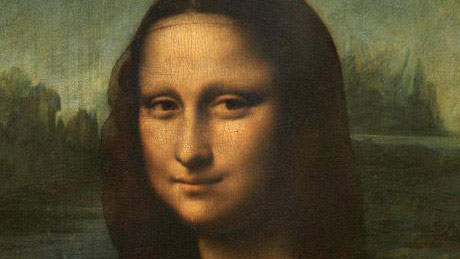Is the Mona Lisa's smile about to decipher?
Using fluorescent X-ray spectroscopy to examine Leonardo da Vinci's multi-layer painting technique is the latest way for scientists to decipher Mona Lisa's mysterious smile.

Mona Lisa and a mysterious smile have been a headache for many researchers.Photo: Telegraph.
French scientists have studied the seven paintings of Leonardo da Vinci placed in the Louvre museum, Paris, including the famous Mona Lisa painting to analyze painting techniques that have taken the works of the famous This painting is on a masterpiece. This is also the scientists' efforts to find answers about Mona Lisa's smile.
Experts at the French Museum of Reconstruction and Research found that the Da Vinci painting used up to 30 layers of color to create the most refined and perfect picture of the painting. me And as the researcher saves Philippe Walter, each color layer is less than 40 micrometers thick or half the thickness of a human hair.
The painting technique is called 'sfumato' that Da Vinci uses to create a blur, depth and darkness for his painting. Scientists have tried to study this technique of Da Vinci but encounter limitations are forced to take samples from the pictures.
Currently, French researchers have used a technique that allows its technology not to harm paintings. It is the X-ray fluorescence spectroscopy technique. This technique allows the study of paint colors and its chemical composition without taking samples from the pictures.
X-ray projectors will be brought until the museum closes and conduct research with the drawings. Dr. Walter said: 'Now we can find the blend of colors that painters have used in drawing colors. And this is very important to understand the technique '.
The analysis of Da Vinci's different drawings showed that he always tried to explore and innovate his drawing methods. In the 'Mona Lisa' painting, Da Vinci used manganese oxide to polish the picture. But in other paintings, he used copper. Although, more often, he uses a layer of enamel.
Source: Telegraph
- Decipher the secret hidden behind Mona Lisa's smile
- Behind the smile Mona Lisa
- Decode the Mona Lisa smile with photo technology
- Decode the mysterious smile
- The 8 biggest mysteries in the Mona Lisa painting
- If Mona Lisa's prototype skull laughs
- Mona Lisa has syphilis?
- The mysterious smile of her second Mona Lisa
- Found the Mona Lisa's skull?
- Successfully restored Mona Lisa's voice
- How to know the person opposite you is making a fake smile?
- Science points out the mystery behind the smile
 'Fine laughs' - Scary and painful torture in ancient times
'Fine laughs' - Scary and painful torture in ancient times The sequence of numbers 142857 of the Egyptian pyramids is known as the strangest number in the world - Why?
The sequence of numbers 142857 of the Egyptian pyramids is known as the strangest number in the world - Why? History of the iron
History of the iron What is alum?
What is alum? Zooming in 10 times on a 140-year-old painting, many people were surprised to discover the 'time travel' detail
Zooming in 10 times on a 140-year-old painting, many people were surprised to discover the 'time travel' detail  Top 5 truths behind Leonardo da Vinci's eternal masterpieces
Top 5 truths behind Leonardo da Vinci's eternal masterpieces  Ancient Egyptian masterpiece so realistic that scientists accurately identified the birds in the painting
Ancient Egyptian masterpiece so realistic that scientists accurately identified the birds in the painting  Decoding the mystery of the attraction of the painting 'Girl with a Pearl Earring'
Decoding the mystery of the attraction of the painting 'Girl with a Pearl Earring'  Van Gogh's paintings contain surprisingly accurate physics knowledge.
Van Gogh's paintings contain surprisingly accurate physics knowledge.  Enlarging the famous 'Mona Lisa' painting 400 times, experts discover 3 hidden secrets
Enlarging the famous 'Mona Lisa' painting 400 times, experts discover 3 hidden secrets 